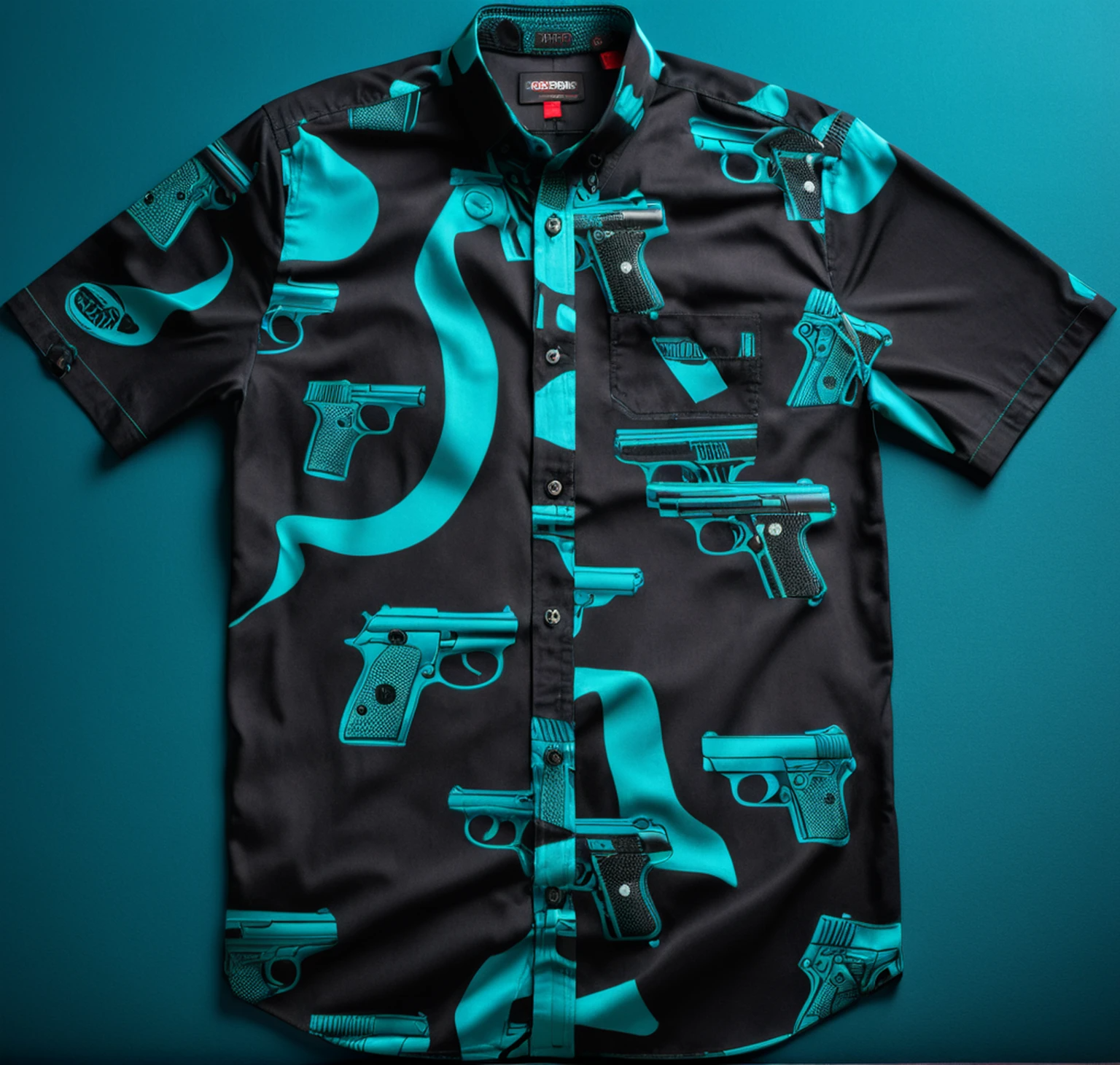The aloha shirt, also known as the Hawaiian shirt, is a distinct style of dress shirt originating from Hawaii. These shirts typically feature collars, buttons, and short sleeves, crafted from printed fabric. They are commonly worn untucked, although they can also be tucked into trousers, and are embraced both casually and as informal business attire in Hawaii. Aloha shirts have Japanese roots.
The tradition of “Aloha Friday,” or Casual Friday, emerged as a way to promote aloha shirts. This tradition involves wearing more relaxed attire on Fridays to celebrate the end of the workweek.
Aloha dress shirts are usually printed, mostly short-sleeved, and collared. They typically include buttons, often extending down the entire length of the shirt or at least to the chest, and frequently have a left chest pocket with a continuous printed pattern. These shirts are suitable for both men and women, with women’s versions often featuring a lower-cut, v-neck style.
These shirts are often worn untucked, possibly influenced by local Filipinos who referred to them as “bayau,” meaning “friend.” The choice to wear them untucked or tucked depends on personal preference, similar to tucking or untucking a polo shirt. In the 1950s, wearing the shirt as business attire during aloha week was permitted, but only if tucked in.
Traditional men’s aloha shirts are typically adorned with traditional Hawaiian quilt designs, tapa designs, and simple floral patterns in muted colors. Contemporary designs may incorporate various island tropical elements, such as drinks, palm trees, or surfboards.
Initially, locals tended to avoid aloha shirts due to their boldness, while tourists embraced the vibrant designs. Some locals preferred shirts with “reverse prints,” where the exterior featured muted colors resulting from printing on the interior.
The origins of the aloha shirt can be traced back to the 1920s or early 1930s. Several sources attribute its creation to different individuals and stores in Hawaii. The term “aloha shirt” first appeared in print in the 1930s and was later trademarked by Ellery Chun’s company.
Chinese-Hawaiian businessman Ellery Chun graduated from Yale with a degree in economics and went back to Hawaii to run his family dry goods store. His shirts were a big hit. Major designer labels began manufacturing and selling aloha shirts en masse by the late 1930s, leading to significant growth in the industry.
Following World War II, returning servicemen popularized aloha shirts in the United States. This contributed to their widespread appeal and cemented their status as an iconic American garment. Today, aloha shirts are considered a premier textile export of Hawaii’s manufacturing industry.
Aloha Week, established in 1947, played a significant role in promoting aloha wear and supporting local clothing manufacturing. In 1965, Bill Foster Sr., serving as president of the Hawaii Fashion Guild, spearheaded a campaign advocating for “Aloha Friday.” This initiative aimed to persuade employers to permit men to wear aloha shirts on the final business day of the week for a few months annually.
“Aloha Friday,” introduced in 1966, further popularized aloha shirts as workplace attire, evolving into “Casual Friday” across the United States.
Montgomery Clift and Frank Sinatra famously wore Alohas in 1953’s From Here to Eternity. Bob Hope wore them throughout his The Road film series. Even Elvis wore one on the cover of the Blue Hawaii soundtrack in 1961.
The resurgence of interest in aloha shirts in recent years has seen them featured in fashion magazines and reinterpreted by luxury brands like Gucci. Traditional Hawaiian shirtmakers continue to thrive by revisiting vintage designs to meet modern tastes. In a world seeking vibrancy, the aloha shirt remains a simple yet powerful source of joy. Today, there are a lot of choices from many companies offering brightly colored shirts.
*The views and opinions expressed on this website are solely those of the original authors and contributors. These views and opinions do not necessarily represent those of Spotter Up Magazine, the administrative staff, and/or any/all contributors to this site.
SOURCE
https://en.wikipedia.org/wiki/Aloha_shirt
https://www.smithsonianmag.com/innovation/history-hawaiian-shirt-180974598/
https://www.mentalfloss.com/article/66921/brief-history-hawaiian-shirt
